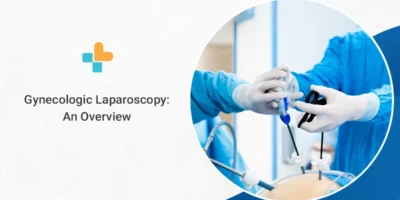Pregnancy can be prevented by several methods. However, most of them have long-term side effects or low efficacy. One popular mode of contraception is tubal ligation or tubectomy. Here, the fallopian tubes (also known as oviducts) are referred to as the tubes, since they connect the ovaries to the uterus. It is a surgical procedure, where the fallopian tube is blocked, preventing the meeting of the sperm and ovum, thus stopping fertilization.
Tubectomy is considered a highly effective contraceptive procedure, with an efficacy rate of about 99%. This blog will discuss the tubectomy procedure in detail, busting all myths and confusion.
Types of Tubectomy
The different methods to perform tubectomy are as follows:
- Hysteroscopy: Vaginal approach of conducting tubectomy.
- Laparoscopy: Tubal ligation performed via a minor incision near the navel, the most popular among the types of tubectomies.
- Laparotomy: A type of open surgery (Eg: C-section surgery), where an incision is made to get into the abdominal cavity.
- Micro Laparoscopy: Same process as laparoscopy, but done with smaller instruments.
- Mini-Laparotomy: A less invasive option than regular laparotomy.
The laparoscopic approach is popularly used for tubectomy since it involves negligible scarring and allows the patient to leave the hospital within a day.
Procedure and Techniques
First, an intravenous channel is established (I.V), through which anesthesia is delivered. As mentioned before, the laparoscopic method is preferred. Hence, a small cut is made near the navel. In order to examine the organs more easily, the abdomen is expanded before a laparoscope, a narrow watching tube approximately the diameter of a pencil, is inserted into the incision. A further, tiny incision is created near the pubic hairline, and this one is used to implant a specific tool for grabbing the fallopian tubes. Two ways can be used to seal the tubes, such as:
- Using a band or clip on the fallopian tube.
- Via electrocoagulation i.e clotting the tube using electric current.
- The tubes can be entirely separated and eliminated from the body.
Now, the laparoscope is taken out and the incision is bandaged or sewn back.
Risks and Potential Complications
Just like any other medical procedure, tubectomy isn’t foolproof of risks or complications. Some of the tubectomy side effects are:
- Anesthesia used during the surgery may cause sore throat, dry mouth, nausea, etc.
- Although rare, a few surgery-related risks can be perforation of fallopian tubes, bleeding, infection, uterus damage, etc.
The risk of developing ectopic pregnancy remains.
How You Prepare For The Tubectomy
Thorough research is needed to know about the pros and cons of tubectomy. Once you have decided to undergo the procedure, the doctor will guide you in preparing for it. Additionally, the below-mentioned steps can be followed:
- Wear something comfortable since you have to change into a hospital gown before the procedure.
- Do not wear any ornaments or jewelry.
- Generally one shouldn’t consume anything for 8-12 hours prior to surgery.
- Post the surgery, you won’t be allowed to drive. So make arrangements to reach home beforehand.
What Can You Expect?
Apart from the above-mentioned steps, the patient may be needed to take a bath to ensure a clean body and minimal chances of infection. Often painkillers or sedatives are prescribed to handle surgery pain and general anxiety.
It takes roughly 30 minutes to accomplish a tubal ligation procedure. Since a laparoscope is less intrusive than open surgery and reduces scarring, your surgeon will be using it to complete the treatment. A laparoscope is a tiny instrument with a camera mounted.
After a tubectomy, patients could be released on the same day. Pain and nausea are possible within the initial 4 to 8 hours.
What Is The Tubectomy Recovery Time?
After a tubal ligation, complete healing often takes around 4 weeks. It varies depending on the approach taken. When a laparoscopic tubectomy is performed, complete recovery takes around a week. It takes between one and three weeks to recuperate after a mini-laparotomy, and it can take much longer if it’s performed after birth.
Who Is Eligible and Not Eligible For Tubectomy?
Generally, no such eligibility can restrict or deny sterilization to a woman.
However, the candidate should be mentally sound to decide and give consent for the procedure. Besides, the medical history of the candidate needs to be examined to learn of any possible tubectomy complications. The suggested age range has been set to 22-49 by the Indian government.
Is Tubectomy Reversible?
Tubectomy can be reversible only in cases where the patient’s fallopian tubes are in healthy enough condition to be reconnected. However, these days IVF is showing more promise than a tubectomy reversal surgery. Hence, the surgery is outdated and IVF is preferred if pregnancy is desired.
Conclusion
Procedures such as vasectomy and tubectomy are mostly irreversible processes, so a lot of thinking has to be put into making the decision. This is why it is necessary to seek medical help from experts in the field. At Ayu Health, one can get access to a large pool of medical professionals, who can help and guide one in getting the best treatment. Interested to learn more? Contact us at 636-610-0800.
Our Hospital Locations
Gynaecology Surgery Hospitals in Chandigarh | Gynaecology Surgery Hospitals in Bangalore | Gynaecology Surgery Hospitals in Jaipur | Gynaecology Surgery Hospitals in NCR | Gynaecology Surgery Hospitals in Hyderabad
Our Doctors
Gynaecology Surgery Doctors in Chandigarh | Gynaecology Surgery Doctors in Bangalore | Gynaecology Surgery Doctors in Jaipur | Gynaecology Surgery Doctors in NCR | Gynaecology Surgery Doctors in Hyderabad
About the Author

Dr. Nikitha Murthy B.S.
Dr. Nikitha Murthy B.S. is a renowned Gynaecologist currently practicing at Ayu Health, Bangalore.
He is s a Consultant with IVF Access at its Rajajinagar clinic. She has over 6 years of experience. Dr. Nikitha has a post-graduation (MS) in Gynaecology, DNB from the National Board of India, and a Fellowship in Reproductive Medicine. He also has vast experience in Post-Graduation (MS) in Gynaecology and DNB.




